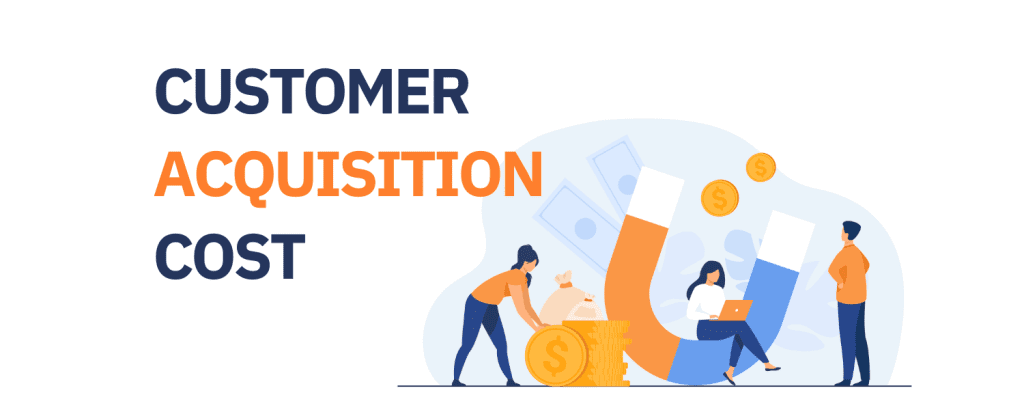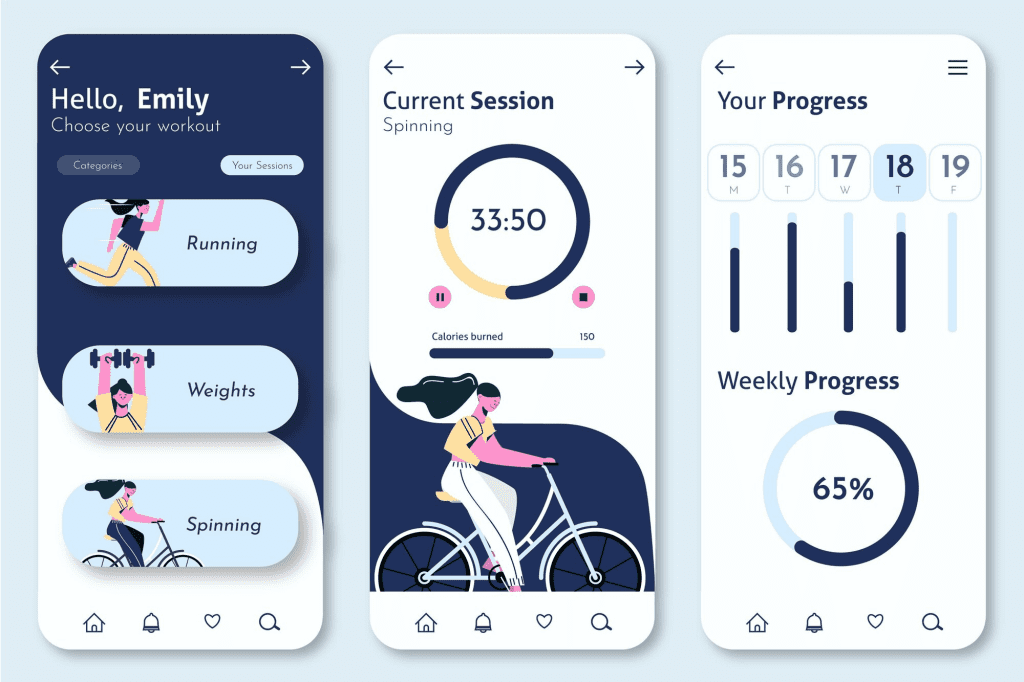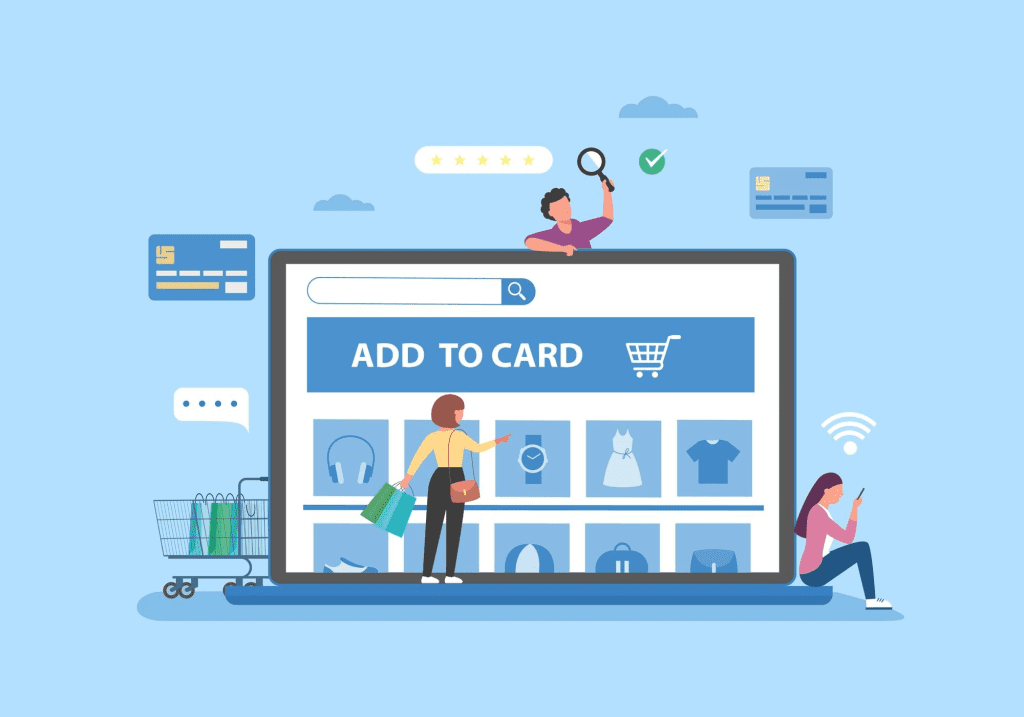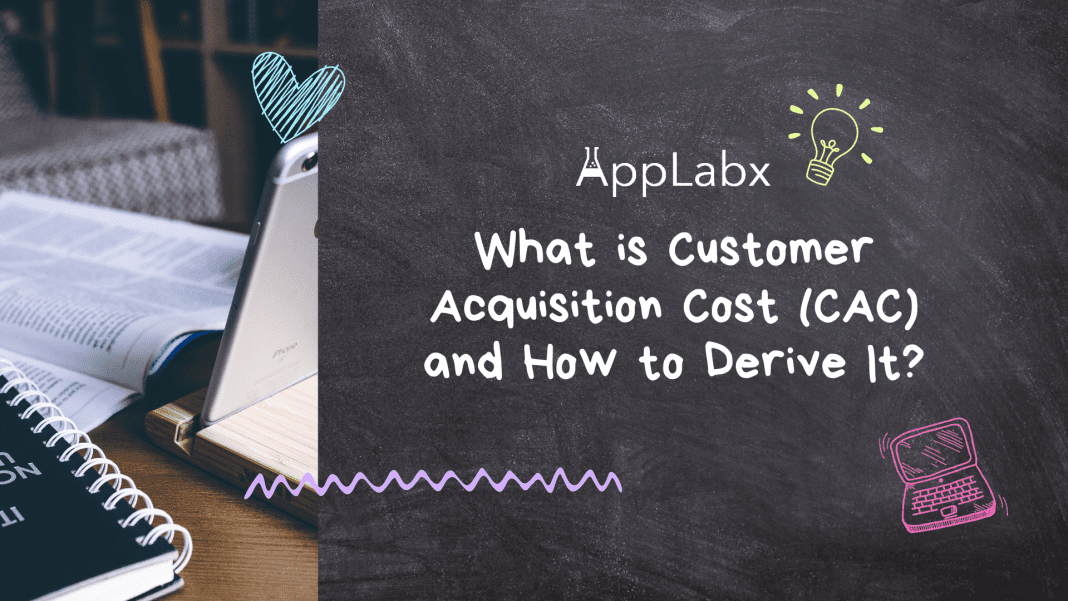Key Takeaways
- Decoding CAC: A Strategic Imperative: Unravel the strategic significance of Customer Acquisition Cost (CAC) in business growth. Understand how this metric becomes a guiding compass, steering businesses through the intricate seas of customer acquisition.
- Optimization Strategies for Efficiency: Dive into the components of CAC, from advertising alchemy to marketing mastery and sales symphony. Learn the strategies that drive efficiency in customer acquisition, ensuring that every aspect operates at peak performance.
- Industry Benchmarks as Strategic Insights: Navigate your business with industry benchmarks as your North Star. Gain insights into the unique challenges and opportunities of e-commerce and SaaS industries. Leverage these benchmarks for strategic assessments, data-driven decisions, and optimal CAC management, ensuring sustained growth.
In the vast ocean of business metrics, one term reigns supreme as a guiding star for companies charting their course to success — Customer Acquisition Cost (CAC).
If you’ve ever felt the pulse of marketing, sales, or entrepreneurship, you’ve likely encountered this pivotal metric.
But what precisely is Customer Acquisition Cost, and why does it hold the key to unlocking financial success?
In this comprehensive guide, we embark on a journey to demystify CAC and empower businesses with the knowledge to derive it effectively.

The Pillars of CAC: Decoding the Components
At its core, Customer Acquisition Cost encapsulates the financial investment required to gain a single customer.
This metric acts as a financial compass, steering businesses through the intricate web of advertising, marketing, and sales expenses.
Join us as we dissect the key components contributing to CAC, from the realms of online advertising and content creation to the intricacies of sales team expenses.
CAC’s Role in the Symphony of Business Success
Understanding CAC is not just about crunching numbers; it’s about unraveling its impact on the broader spectrum of business operations. Picture CAC as the navigator, providing critical insights into the efficiency of customer acquisition strategies.
We delve into its symbiotic relationship with Customer Lifetime Value (CLV), exploring how these metrics harmonize to shape a company’s profitability and long-term viability.
Crunching the Numbers: How to Calculate CAC
To truly master CAC, one must comprehend the alchemy behind its calculation.
We break down the formula, offering clarity on the equation that defines CAC: (Total Marketing and Sales Costs) divided by the Number of New Customers Acquired.
Practical examples will illuminate its real-world implications, providing a foundation for businesses to assess and optimize their CAC.
Strategies to Set Sail: Reducing CAC for Business Success
Armed with the knowledge of CAC calculation, businesses can navigate the seas of customer acquisition more strategically.
Our guide explores practical strategies to reduce CAC, from optimizing advertising campaigns through targeted audience segmentation to streamlining sales processes using cutting-edge customer relationship management (CRM) tools.
Industry Insights: CAC Benchmarks
No voyage is complete without understanding the lay of the land. We delve into industry-specific benchmarks, unravelling the mysteries of average CAC values and examining the challenges and opportunities unique to various sectors.
Embarking on a Journey: Welcome to the Definitive Guide
This isn’t just another guide; it’s a compass in the complex and exhilarating world of business metrics.
As we navigate the depths of Customer Acquisition Cost, we invite you to join us on a voyage of discovery — where insights and strategies converge to illuminate the path toward sustainable growth.
So, fasten your seatbelts and prepare for an expedition into the heart of “What is Customer Acquisition Cost (CAC) and How to Derive It?”
But, before we venture further, we like to share who we are and what we do.
About AppLabx
From developing a solid marketing plan to creating compelling content, optimizing for search engines, leveraging social media, and utilizing paid advertising, AppLabx offers a comprehensive suite of digital marketing services designed to drive growth and profitability for your business.
AppLabx is well known for helping companies and startups use digital marketing to drive web traffic to their websites and web apps.
At AppLabx, we understand that no two businesses are alike. That’s why we take a personalized approach to every project, working closely with our clients to understand their unique needs and goals, and developing customized strategies to help them achieve success.
If you need a digital consultation, then send in an inquiry here.
What is Customer Acquisition Cost (CAC) and How to Derive It?
- Key Components of Customer Acquisition Cost
- Why CAC Matters
- Strategies to Reduce CAC
- CAC Benchmarks by Industry
1. Key Components of Customer Acquisition Cost

Advertising Costs: Unveiling the Financial Facets
Online Advertising: The Digital Frontier
In the digital age, online advertising stands as a pillar of Customer Acquisition Cost.
Whether through pay-per-click (PPC) campaigns, social media ads, or display advertising, businesses invest substantial sums to capture the attention of potential customers.
It was calculated that digital advertising spending worldwide amounted to 522.5 billion U.S. dollars in 2021, underlining the significance of this component within CAC calculations.
Example: A company running a Google Ads campaign might allocate a budget for keyword bidding, ad creation, and targeting, contributing significantly to its CAC.

Traditional Advertising: Navigating Established Channels
While digital advertising dominates, traditional methods like television, radio, and print still play a role.
These channels demand resources for ad creation, airtime, or space, adding to the overall CAC.
Television advertising spending in the United States amounted to 66.64 billion U.S. dollars in 2022.
Example: A retail brand investing in a nationwide television campaign might incur costs for producing the ad, securing airtime, and monitoring its impact.
Marketing Costs: Crafting Strategies for Customer Attraction
Content Creation: Fueling the Engagement Engine
Compelling content is the lifeblood of marketing efforts, contributing substantially to CAC.
From blog posts and articles to videos and graphics, businesses invest time and money to create engaging material.
Content marketing costs vary, but a study found that companies spend an average of 26% of their total marketing budget on content marketing.
Example: A software company investing in creating informative blog posts and video tutorials to attract and educate its target audience.

Social Media Marketing: Building Connections in the Digital Realm
In an era dominated by social platforms, marketing efforts extend to building and maintaining a social media presence.
Expenses include sponsored posts, influencer collaborations, and social media management tools.
Example: An e-commerce brand investing in Instagram influencers and running might target Facebook ads to increase brand visibility.
Sales Costs: Nurturing Relationships for Conversion
Sales Team Expenses: The Human Touchpoint
A proficient sales team is an invaluable asset, but it comes with costs.
This includes salaries, commissions, training, and tools.
Example: A B2B company might employ a sales team to engage with potential clients, incurring costs for salaries, training programs, and commissions.

Commissions: Incentivizing Success
Commission structures are a common practice to motivate sales teams, but they are an essential component of CAC.
Example: An online marketplace might pay a percentage of each sale as a commission to affiliate marketers driving customer acquisitions.

CAC Calculation: Illuminating the Financial Equation
To derive Customer Acquisition Cost, businesses employ a straightforward yet powerful formula:
CAC = Total Marketing and Sales Costs / Number of New Customers Acquired
This equation forms the bedrock of CAC analysis, providing a clear snapshot of the investment required to acquire each new customer.
By understanding this formula, businesses can make informed decisions on resource allocation and optimize their strategies for enhanced efficiency.
Example: A subscription-based software company with a total marketing and sales cost of $100,000 acquiring 1,000 new customers would have a CAC of $100.
Illuminating CAC in Action
Let’s delve into practical scenarios to illustrate CAC calculations in action:
- E-commerce Success Story:
- Advertising Costs: $50,000 (Online advertising)
- Marketing Costs: $20,000 (Content creation and social media marketing)
- Sales Costs: $30,000 (Sales team expenses and commissions)
- New Customers Acquired: 2,000
- CAC = ($50,000+$20,000+$30,000) / 2,000= $50
- Service-Based Company Struggle:
- Advertising Costs: $15,000 (Online advertising)
- Marketing Costs: $25,000 (Content creation and social media marketing)
- Sales Costs: $40,000 (Sales team expenses and commissions)
- New Customers Acquired: 500
- CAC = ($15,000+$25,000+$40,000) / 500 = $160
2. Why CAC Matters

The Financial Compass: Understanding the Significance of CAC
Impact on Profitability
Customer Acquisition Cost (CAC) isn’t just a metric; it’s a financial compass guiding businesses through the seas of profitability.
Understanding the implications of CAC is crucial for maintaining a healthy bottom line and sustaining long-term growth.
- Profitability Equation:
- By comparing CAC with the revenue generated from acquired customers, businesses can gauge the efficiency of their acquisition strategies.
- A higher CAC relative to customer-generated revenue can erode profitability, signalling the need for optimization.
Comparison with Customer Lifetime Value (CLV)
The relationship between CAC and Customer Lifetime Value (CLV) is pivotal, representing the delicate balance between investment and return.
- CLV/CAC Ratio:
- The CLV/CAC ratio helps assess the long-term viability of customer acquisition efforts.
- A ratio of 3:1 or higher indicates a healthy balance, ensuring that customer lifetime value exceeds the cost of acquisition.

Monitoring CAC Trends for Business Growth
The dynamism of business environments requires constant vigilance over CAC trends to adapt and thrive.
- Trend Analysis:
- Regularly monitoring CAC trends allows businesses to identify inefficiencies and adapt strategies promptly.
- Trends can reveal shifts in consumer behaviour, the effectiveness of marketing channels, and the impact of external factors.
The Bottom Line: CAC as a Key Performance Indicator (KPI)
Financial Health Indicator
CAC serves as a critical Key Performance Indicator (KPI) that reflects the overall financial health of a business.
- Investor Confidence:
- Investors often scrutinize CAC as part of due diligence, using it as a metric to assess the efficiency of a company’s growth strategies.
- A lower and stable CAC can boost investor confidence, signalling effective customer acquisition practices.
Relationship with Customer Satisfaction
CAC isn’t merely a financial metric; it intertwines with customer satisfaction and loyalty.
- Customer Retention Impact:
- A high CAC underscores the importance of customer retention efforts.
- Satisfied customers who become repeat buyers contribute significantly to offsetting the initial acquisition investment.
CAC in a Data-Driven World: Leveraging Analytics for Success
Data-Driven Decision Making
In an era dominated by data analytics, CAC empowers businesses to make informed decisions based on concrete insights.
- Predictive Analytics:
- Predictive analytics models leverage historical CAC data to forecast future acquisition costs.
- This enables proactive adjustments to strategies, aligning them with anticipated market changes.
The Role of Customer Segmentation
Understanding CAC becomes more nuanced when coupled with customer segmentation.
- Segment-Specific CAC:
- Analyzing CAC across different customer segments provides insights into the most and least profitable demographics.
- Businesses can then tailor their acquisition strategies to target high-value segments more effectively.
3. Strategies to Reduce CAC

Optimizing Advertising Campaigns
Targeted Audience Segmentation
Precision in targeting can significantly impact the efficiency of advertising campaigns, reducing unnecessary costs.
- Data-Driven Segmentation:
- Utilize customer data and analytics tools to identify and target specific demographics.
- Companies that leverage data-driven personalization see a 15-20% increase in marketing ROI on average.
- Example:
- A fitness app targeting health-conscious individuals might focus on segments interested in home workouts, nutrition, or outdoor activities.

A/B Testing for Ad Performance
Continuous refinement of ad creatives through A/B testing helps identify the most effective elements, enhancing ROI.
- Iterative Testing:
- Experiment with variations in headlines, visuals, and CTAs to understand audience preferences.
- Example:
- An e-commerce brand might test different product images, messaging, or promotional offers to determine the most compelling combinations.

Enhancing Marketing Efficiency
Content Optimization for Organic Reach
Strategic content creation not only engages the audience but also contributes to organic customer acquisition.
- SEO Best Practices:
- Optimize website content for search engines to improve organic visibility.
- According to a study by Backlinko, the top 3 Google search results get 54.4% of all clicks.
- Example:
- A travel company creating informative destination guides may attract organic traffic from users actively researching travel options.

Social Media Engagement Strategies
Leveraging social platforms effectively can lead to organic growth and reduce the reliance on paid advertising.
- Community Building:
- Foster engagement by building a community around your brand on social media.
- Example:
- An online fashion retailer might encourage user-generated content through hashtags, creating a sense of community among fashion enthusiasts.
Streamlining Sales Processes
Sales Training and Efficiency
Investing in a skilled and efficient sales team can improve conversion rates, reducing the overall cost per acquisition.
- Ongoing Training:
- Provide continuous training to sales teams to enhance product knowledge and communication skills.
- Great sales training programs will help you and your team members sell at your full potential.
- Example:
- A tech company might conduct regular training sessions to keep its sales team updated on the latest product features and industry trends.
Customer Relationship Management (CRM) Utilization
Implementing CRM systems streamlines customer interactions, providing valuable insights for more personalized and effective sales approaches.
- Data-Driven Sales:
- Utilize CRM data to understand customer preferences, anticipate needs, and personalize interactions.
- For every dollar a company spends on CRM, it gets back $8.71.
- Example:
- A subscription-based service might use CRM data to identify upsell opportunities or tailor retention strategies based on customer behaviour.
Exploring Advanced Technologies
Marketing Automation
Automation tools can streamline marketing processes, allowing teams to focus on strategy and creativity.
- Workflow Automation:
- Implement marketing automation for repetitive tasks like email campaigns, lead nurturing, and customer segmentation.
- Brands using marketing automation tools experienced a 14.5% increase in sales productivity.
- Example:
- An e-commerce platform might use automation to trigger personalized email sequences based on customer interactions, leading to increased conversions.
Artificial Intelligence (AI) in Customer Acquisition
AI-driven tools analyze vast datasets, enabling predictive analytics and personalized customer experiences.
- Predictive Analytics:
- AI algorithms can forecast customer behavior, helping businesses anticipate trends and adjust strategies proactively.
- Companies that used AI tools when making sales increased lead generation by 50%.
- Example:
- An online streaming service might use AI to recommend content based on user preferences, increasing engagement and customer satisfaction.
Leveraging Partnerships and Collaborations
Affiliate Marketing Programs
Collaborating with affiliates can provide a cost-effective way to reach new audiences and drive conversions.
- Performance-Based Partnerships:
- Establish affiliate programs where partners earn commissions for driving successful customer acquisitions.
- Example:
- An e-learning platform might partner with influencers or educational bloggers, offering them commissions for every student sign-up through their referral.

Co-Marketing Initiatives
Teaming up with complementary businesses for joint marketing efforts can expand reach without exponentially increasing costs.
- Shared Audiences:
- Identify businesses with similar target audiences for collaborative marketing campaigns.
- Example:
- A beauty brand might collaborate with a skincare company for a joint campaign, leveraging each other’s audiences and reducing overall acquisition costs.
4. CAC Benchmarks by Industry

Understanding Average CAC Values
Industry-Specific Dynamics
Understanding the average Customer Acquisition Cost (CAC) values across industries is pivotal for businesses to assess their performance within their respective landscapes.
- SaaS Industry Benchmarks:
- SaaS companies often experience higher CAC due to the competitive nature of the industry and the need for extensive marketing and sales efforts.
- The average customer acquisition cost for SaaS businesses is estimated to be around $395 per customer.
- E-commerce Sector Averages:
- E-commerce businesses may encounter varied CAC values based on factors like product type, market saturation, and digital marketing strategies.
- The lowest average CAC is in the eCommerce industry with an average organic CAC of $87.
Impact of Business Models
Different business models contribute to variances in CAC benchmarks, emphasizing the need for industry-specific analysis.
- Subscription-Based Models:
- Subscription-based businesses often invest more upfront in acquiring customers but aim for higher Customer Lifetime Value (CLV).
- Transactional Models:
- Transactional businesses may have lower CAC but need a higher volume of transactions to offset acquisition costs.
Industry-Specific Challenges and Opportunities
E-commerce Challenges
The e-commerce industry faces distinct challenges that influence CAC benchmarks.
- Fierce Competition:
- Intense competition in the e-commerce sector can drive up CAC, necessitating strategic differentiation through branding and customer experience.
- Brands must continually innovate to stand out and justify acquisition costs.
- Market Saturation Impact:
- In saturated markets, e-commerce companies may struggle to acquire customers cost-effectively.
- Investing in unique value propositions and targeted marketing becomes crucial for success.
SaaS Opportunities
SaaS companies encounter specific opportunities that impact their CAC benchmarks.
- High CLV Potential:
- SaaS businesses, with their subscription models, have the potential for higher CLV, justifying higher upfront acquisition costs.
- Focus on customer retention and upselling to maximize long-term value.
- Value-Based Marketing:
- Emphasizing the value of SaaS products in marketing can attract qualified leads willing to pay higher acquisition costs.
- Precision in targeting the right audience is key to efficiency.
Navigating CAC Challenges and Optimization Strategies
Evaluating Industry Averages
Benchmarking against industry averages helps businesses identify areas for improvement and potential over-expenditure.
- Strategic Assessments:
- Regularly evaluate industry benchmarks to determine if your CAC aligns with or exceeds averages.
- Identify areas where optimization can occur, such as refining marketing channels or enhancing conversion funnels.
Industry-Specific Optimization Strategies
Tailoring optimization strategies to industry nuances is critical for efficient CAC management.
- E-commerce Optimization:
- Focus on SEO, user experience, and personalized marketing to attract and retain customers cost-effectively.
- Implement referral programs and loyalty initiatives to capitalize on existing customer bases.
- SaaS Efficiency Measures:
- Leverage free trials and freemium models to attract users with a lower initial acquisition cost.
- Invest in comprehensive onboarding processes to maximize user engagement and conversion.
Data-Driven Decision Making
Importance of Analytics
Data analytics play a pivotal role in understanding and optimizing CAC benchmarks.
- Predictive Analytics:
- Utilize predictive analytics models to forecast future CAC trends based on historical data.
- This enables businesses to proactively adjust strategies in response to anticipated market changes.
- Customer Segmentation Insights:
- Analyze CAC across different customer segments for insights into the most and least profitable demographics.
- Tailor marketing strategies are based on the unique characteristics and behaviours of each segment.
Leveraging Customer Relationship Management (CRM)
Implementing CRM systems provides valuable insights for CAC management and customer-centric decision-making.
- Holistic Customer View:
- Utilize CRM data to understand customer behaviour, preferences, and engagement patterns.
- This comprehensive view allows for targeted marketing and efficient allocation of resources.
- Retention Strategies:
- Leverage CRM data to identify opportunities for customer retention, reducing the need for continuous high-cost acquisition efforts.
- Personalized communication and loyalty programs can stem from CRM insights.
Realizing Sustainable Growth
Balancing CAC with CLV
Striking a balance between CAC and Customer Lifetime Value is fundamental for sustainable growth.
- CLV/CAC Ratio Focus:
- Aim for a CLV/CAC ratio of 3:1 or higher, ensuring that the long-term value of a customer exceeds the cost of acquisition.
- This ratio serves as a key indicator of the health and sustainability of customer acquisition efforts.
- Iterative Optimization:
- Continuously iterate and optimize strategies based on evolving market conditions and performance metrics.
- This ensures adaptability to changes and the ability to seize emerging opportunities.
Conclusion
The Strategic Significance of CAC: Beyond Numbers and Equations
In concluding our deep dive into Customer Acquisition Cost (CAC), it’s crucial to appreciate the strategic essence it carries.
CAC is not a mere financial metric; it’s a guiding beacon steering businesses through the intricate seas of customer acquisition.
Beyond the numerical calculations, it unfolds a strategic narrative, where every dollar invested in advertising, marketing, and sales represents a calculated move toward securing a lasting connection with valuable customers.
Understanding CAC is not just about financial acumen; it’s about weaving a strategic fabric that shapes the decisions steering a business’s growth trajectory.
The CAC Components: Strategies for Efficiency
Our exploration into CAC components uncovered the intricate strategies that drive efficiency in customer acquisition.
From the alchemy of advertising optimization, where precision in audience segmentation and A/B testing refine strategies, to the mastery of marketing with organic reach and community engagement, each component plays a vital role.
The symphony of sales processes, influenced by ongoing training and technological navigation, adds another layer.
In essence, optimizing CAC involves mastering the harmonious integration of these components, ensuring that every aspect of customer acquisition operates at peak efficiency.
Industry Benchmarks: A North Star for Optimization
Understanding CAC benchmarks by industry is akin to navigating with a North Star; it provides businesses with a reference point for their own optimization strategies.
In concluding this section, it’s clear that e-commerce and SaaS industries present unique challenges and opportunities.
Strategic assessments against industry averages, coupled with data-driven decisions, offer a roadmap for businesses to course-correct and refine their customer acquisition strategies.
In essence, industry benchmarks are not just metrics to measure against but strategic insights that illuminate the path toward optimal CAC management.
Setting Sail Toward Sustainable Growth
As we set sail toward sustainable growth, the importance of the CLV/CAC ratio emerges as the guiding imperative.
Striking the delicate balance where the lifetime value of customers exceeds acquisition costs ensures not just short-term growth but enduring prosperity.
This calls for an iterative approach, adaptability to market changes, and a commitment to continuous improvement.
The ever-evolving landscape of business demands not just strategic navigation but a resilient commitment to optimizing customer acquisition for sustained success.
Anchoring Wisdom in the Journey
In the conclusion of our odyssey into “What is Customer Acquisition Cost (CAC) and How to Derive It?” one realizes that this exploration has been more than a journey through equations; it has been a quest for strategic enlightenment.
The wisdom gained is not a static blueprint but a dynamic tool for adaptation.
CAC is not just a metric; it’s a compass that guides businesses through the currents of competition and the storms of market dynamics.
Let the knowledge acquired from this expedition illuminate your path, empower your decisions, and propel your business toward the shores of prosperity in the ever-changing seas of commerce. Bon voyage.
If you are looking for a top-class digital marketer, then book a free consultation slot here.
If you find this article useful, why not share it with your friends and business partners, and also leave a nice comment below?
We, at the AppLabx Research Team, strive to bring the latest and most meaningful data, guides, and statistics to your doorstep.
To get access to top-quality guides, click over to the AppLabx Blog.
People also ask
How do you derive customer acquisition costs?
To derive Customer Acquisition Cost (CAC), divide total marketing and sales expenses by the number of new customers acquired. The formula is:
CAC = Total Marketing and Sales Costs / Number of New Customers Acquired.
This simple calculation provides a clear insight into the investment required for each new customer.
What is the CAC formula?
The Customer Acquisition Cost (CAC) formula is straightforward:
CAC = Total Marketing and Sales Costs / Number of New Customers Acquired.
By dividing total expenses by the number of acquired customers, businesses gain a clear understanding of the cost associated with acquiring each new customer.
How do you measure customer acquisition?
Measure Customer Acquisition by calculating the Customer Acquisition Cost (CAC):
CAC = Total Marketing and Sales Costs / Number of New Customers Acquired
This metric gauges the efficiency of acquiring customers, helping businesses optimize strategies for sustainable growth.




































